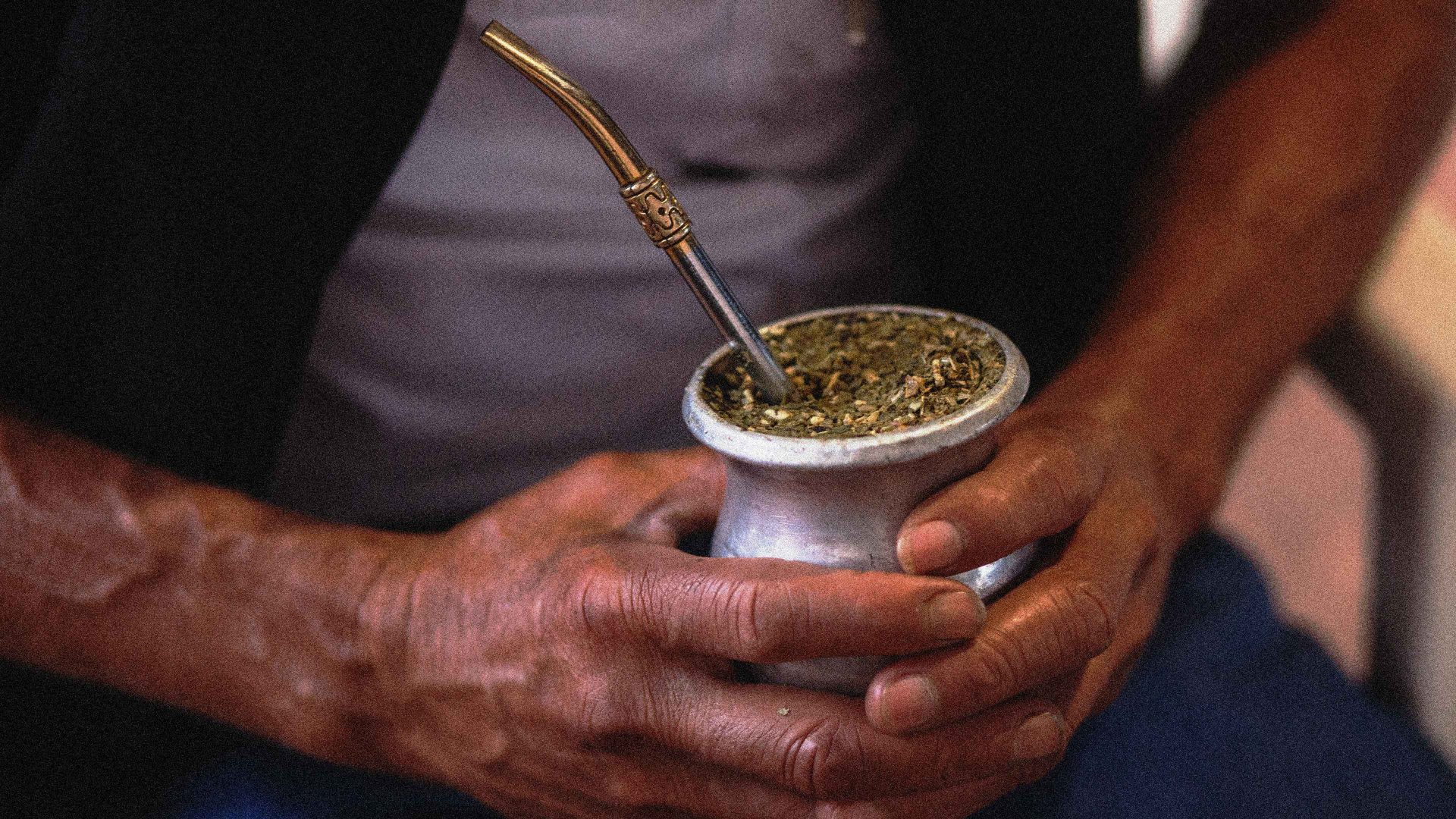“Just try it,” my friend Pablo says of yerba mate, a caffeinated herbal tea. Argentinians are obsessed with it.
Nobody here calls it by its full name, just mate (pronounced mattay). Pablo offers me his bombilla, the distinct metal curved, flattened straw through which mate is sipped. It’s always shared like this. The straw is never wiped or replaced with a fresh one. Groups of five or six Argentinians will sip from the same straw. “I’m not afraid of saliva,” Pablo shrugs.
As a caffeine addict I’m intrigued, but the smell is maybe too herbal for my palette. Unlike the asbestos mouth of my Argentinian friends, mine’s too sensitive to gulp, so I sip and wince, which is considered sacrilege here in Buenos Aires. The question, do you like mate? is very much a rhetorical one. They take the answer very personally – it’s part of the national identity, even more so than a cuppa in Britain.
Unlike the great unwritten Italian rule that there should be no cappuccinos after midday, only espressos, Argentinians drink mate all day and night long. Up to 62% of Argentinians have Italian ancestry.
The sharing element hints at their socialist inclinations. Since 1946, Peronists – often synonymous with socialism – have won 10 of the 14 presidential elections in which they’ve been allowed to run (up until the current president, Javier Milei).
In a country where one in three people currently live in poverty, it also speaks to Argentina’s unreliable economy and their ongoing need to economise, save and share. It is telling that a gentrified coffee-like culture hasn’t exploded from it. While some shops serve it, it’s most often homemade, taken from a flask in a public place.
Despite its caffeine content, Pablo will drink one well into the night. Perhaps it helps Argentinians stay awake for their infamous late dinners. Last time Pablo kindly offered to cook, he advised me to arrive at 10.30pm and served the pasta well past 11pm. I was starving, tired and borderline baffled. Mate was served afterwards, post midnight. It was a Wednesday.
“It’s lovely,” I lie, choking it down once it has sufficiently cooled, resisting the urge to spit it straight back out, a massive no-no. “Muy rico!” Not only can I not get to sleep till 2am, I also feel like brushing my teeth twice to banish the bitter taste. Apparently it grows on you.
Mate is the holy water of Argentina. Even the signature cup they serve it from, a plump, usually brown gourd with the straw sticking out, is iconic. Its distinctive shape has come to represent Argentina as much as the number 10 on Lionel Messi’s shirt. It’s filled with dry leaves, and Pablo carries a flask of hot (but not boiling) water to top it up. On a long car journey, he gets me to top it up approximately every six minutes. His bladder must be full to bursting.
Like many Argentinians he takes the hot mate flask into the gym, including on very hot days, and shares it from one straw with his gym buddies. He’ll meet his mates in the park and they’ll all cram on to one small picnic blanket and happily sip from one straw. He sends me a pic of the mate straw piercing the sunset with a heart emoji.
Mate itself has been a reassuring constant throughout Argentina’s turbulent political and economic modern times. “It’s been with us, passed around in every social circle, since childhood,” he says. “My earliest memory is clumsily imitating my mother tying to make mate. Since then it’s a way of connecting with friends.”
Suggested Reading

The biggest beast in Argentina is not Milei
There are variations, but Pablo looks bemused when I tell him I tried a “mate-infused cocktail”, and then says it’s the most touristy thing he’s ever heard. A few weeks later, the sweltering southern hemisphere summer reaches almost 40C in Buenos Aires. In a dramatic plot twist, he hands me a cold, sweet variation I can never pronounce, called tereré. I sip, then gulp. I actually like it.
Gary Nunn is a journalist who lived in Buenos Aires from 2023 to 2025



